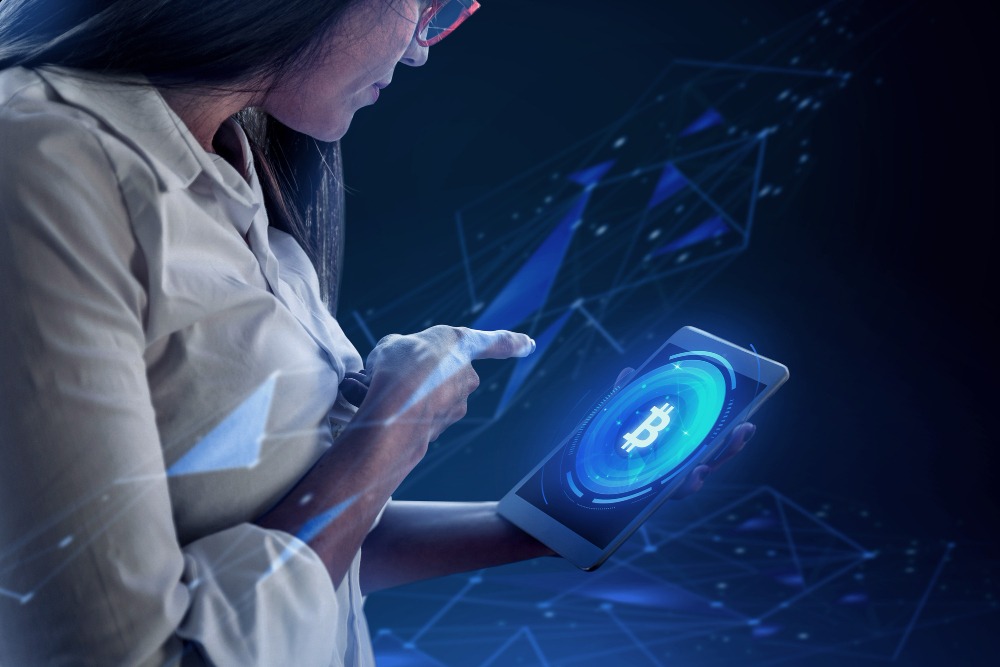
The journey of cryptocurrency, from its humble origins in cryptographic mailing lists to its current status as a trillion-dollar asset class, has been nothing short of astonishing. We’ve witnessed its evolution from a simple digital cash system to a sprawling ecosystem of decentralized finance, digital art, and meme-driven cultural phenomena, now increasingly intertwined with traditional finance and subject to global regulatory scrutiny.
As of late May 2025, the crypto market stands at a pivotal juncture. The initial fervor of speculation has matured into a cautious optimism tempered by market cycles and regulatory realities. The question now isn’t if crypto and blockchain will endure, but how they will evolve, integrate, and impact the world in the coming decades. The road ahead is paved with exciting technological advancements, critical challenges, and profound societal implications.
Building Bridges: The Quest for Interoperability
One of the most pressing challenges facing the blockchain ecosystem today, as of May 2025, is interoperability. The crypto world is a fragmented landscape of hundreds of independent blockchains (Bitcoin, Ethereum, Solana, Avalanche, Polkadot, Cosmos, etc.), each with its own protocols, communities, and assets. This isolation creates inefficiencies, hinders seamless user experience, and limits the potential for truly global decentralized applications.
The future of crypto hinges on the ability of these disparate networks to communicate, share data, and transfer assets seamlessly. This quest for “blockchain interoperability” is driving significant innovation:
- Cross-Chain Bridges: These protocols allow assets to be moved from one blockchain to another. While essential, early bridges have often been targets for hackers due to their complex security mechanisms, leading to billions in stolen funds. Developers are now focusing on building more robust and secure bridging solutions.
- Layer 2 Scaling Solutions (and Beyond): To address the scalability limitations of major blockchains like Ethereum, Layer 2 solutions such as ZK-rollups (e.g., zkSync, Scroll, StarkNet) and Optimistic Rollups (e.g., Arbitrum, Optimism) have become dominant. These technologies process transactions off-chain and then post bundled proofs to the main blockchain, significantly increasing transaction throughput and reducing fees. As of 2025, these solutions are becoming increasingly mature and user-friendly, paving the way for mass adoption of dApps.
- Interoperability Protocols (e.g., Polkadot, Cosmos): Projects like Polkadot and Cosmos are purpose-built to facilitate communication between different blockchains. Polkadot’s “parachains” and Cosmos’s “inter-blockchain communication (IBC)” protocol aim to create an “internet of blockchains,” allowing developers to build specialized chains that can seamlessly interact.
- Abstracted Accounts & Intent-Based Architectures: Emerging concepts that simplify user experience by allowing users to interact with multiple chains without explicitly managing different native tokens or understanding complex bridge mechanics. This could be a game-changer for mainstream adoption.
Real-World Impact Story: Streamlined Supply Chains
Imagine a global supply chain where components are tracked on one blockchain, payments are processed on another, and customs declarations are verified on a third. Without interoperability, this is a disconnected mess. With seamless cross-chain communication, a single product’s journey could be transparently and efficiently managed across multiple specialized blockchains, from raw material sourcing to final delivery, reducing fraud and increasing efficiency for global trade.
The AI-Blockchain Nexus: An Alliance for the Future
As of May 2025, Artificial Intelligence (AI) is undoubtedly the most transformative technology. Its convergence with blockchain holds immense promise, offering solutions to AI’s inherent challenges and vice versa.
- Decentralized AI Networks: Blockchains can provide a secure, transparent, and decentralized infrastructure for AI models and data. This addresses concerns about centralized control, censorship, and data privacy in traditional AI systems. Projects are exploring decentralized AI marketplaces for data, models, and compute power, ensuring fair compensation for contributors and preventing monopolies.
- AI for Blockchain Optimization: AI can be used to optimize blockchain networks themselves, for tasks like:
- Security: AI algorithms can detect anomalous patterns and potential threats on blockchain networks.Scalability: AI can help in dynamic resource allocation and optimizing transaction routing.
- Smart Contract Auditing: AI-powered tools can assist in identifying vulnerabilities in smart contract code, enhancing security.
- Verifiable AI: Blockchain can provide immutable records for AI training data, model versions, and decision-making processes. This is crucial for ensuring transparency, accountability, and auditing in critical AI applications, particularly in fields like healthcare or legal systems.
- Tokenization of AI Assets: The creation of tokens representing AI models, datasets, or even computational power, allowing for new economic models and decentralized ownership of AI resources.
Data-Driven Insight: Investment in “DePIN” (Decentralized Physical Infrastructure Networks) and “DeAI” (Decentralized AI) crypto projects has seen a significant uptick in 2024-2025, with venture capital funding flowing into protocols that combine blockchain’s decentralized nature with AI’s computational power for real-world applications.
Mass Adoption: From Niche to Ubiquitous
While crypto has gained considerable traction, true mass adoption – where blockchain technology seamlessly integrates into everyday life for billions of people, often without them even realizing it – remains the ultimate goal. Several trends are accelerating this:
- User Experience (UX) Simplification: Abstraction layers, simpler wallets, and intuitive interfaces are making crypto less daunting for average users. Projects are focusing on making blockchain technology invisible, much like the internet’s underlying protocols are for most users today.
- Gaming and Metaverse Integration: The intersection of crypto, gaming, and the metaverse is a powerful driver for adoption. Play-to-earn models, true digital ownership of in-game assets (NFTs), and interoperable virtual worlds are attracting millions of users, many of whom are interacting with crypto for the first time.
- Decentralized Identity (DID): Blockchain-based decentralized identity systems are emerging, allowing individuals to control their personal data and prove their identity online without relying on centralized authorities. This is crucial for privacy, security, and a truly user-centric Web3.
- Real-World Asset (RWA) Tokenization: The tokenization of tangible assets like real estate, art, commodities, and even intellectual property is gaining momentum. This can increase liquidity, fractionalize ownership, and provide new investment opportunities, bridging the gap between traditional and digital markets. As of May 2025, major financial institutions are actively piloting RWA tokenization projects.
The Quantum Threat: A Long-Term Challenge
Looking further into the future, a potential long-term threat looms: quantum computing. Quantum computers, still in their early stages, leverage the principles of quantum mechanics to perform computations far beyond the capabilities of even the most powerful classical computers. If fully realized, a sufficiently powerful quantum computer could potentially break the cryptographic algorithms that underpin current blockchain security (specifically, the public-key cryptography used for digital signatures).
While this is not an immediate concern (quantum computers capable of breaking current encryption are likely still decades away), the crypto community is actively researching and developing quantum-resistant cryptography (or post-quantum cryptography). This involves designing new cryptographic algorithms that would remain secure even against quantum attacks. The proactive approach highlights the long-term vision and commitment to security within the blockchain space.
Where We Are Heading: A Vision for Web3
As of May 2025, the trajectory of the crypto market points towards a future characterized by:
- A Multi-Chain World: Not a single blockchain dominating, but an ecosystem of interconnected, specialized blockchains facilitating a vast array of use cases.
- Seamless User Experience: Blockchain technology becoming an invisible layer that powers intuitive and powerful applications, much like the internet TCP/IP protocols today.
- Hybrid Models: A pragmatic blend of decentralized systems where full decentralization isn’t practical or necessary, coexisting with regulated, institutional players leveraging blockchain for efficiency and transparency.
- Ubiquitous Digital Ownership: NFTs evolving beyond profile pictures to represent ownership of a wide array of digital and even real-world assets, forming the backbone of new digital economies.
- Programmable Economy: Smart contracts continuing to automate agreements, create new financial instruments, and power novel organizational structures (DAOs).
- Heightened Regulatory Scrutiny: Governments continuing to refine frameworks to balance innovation with consumer protection and financial stability, leading to greater clarity but also potentially increased centralization in certain aspects.
The Crypto Odyssey has been, and will continue to be, an unpredictable ride. From a rebellious whisper in the digital shadows to a global financial force, it has consistently defied expectations. The challenges are significant – scalability, security, regulation, and the inherent volatility – but the relentless pace of innovation, the growing influx of talent, and the undeniable utility of its core technologies suggest that the revolution ignited by Satoshi Nakamoto is far from over. It is merely entering its next, perhaps most impactful, chapter.


